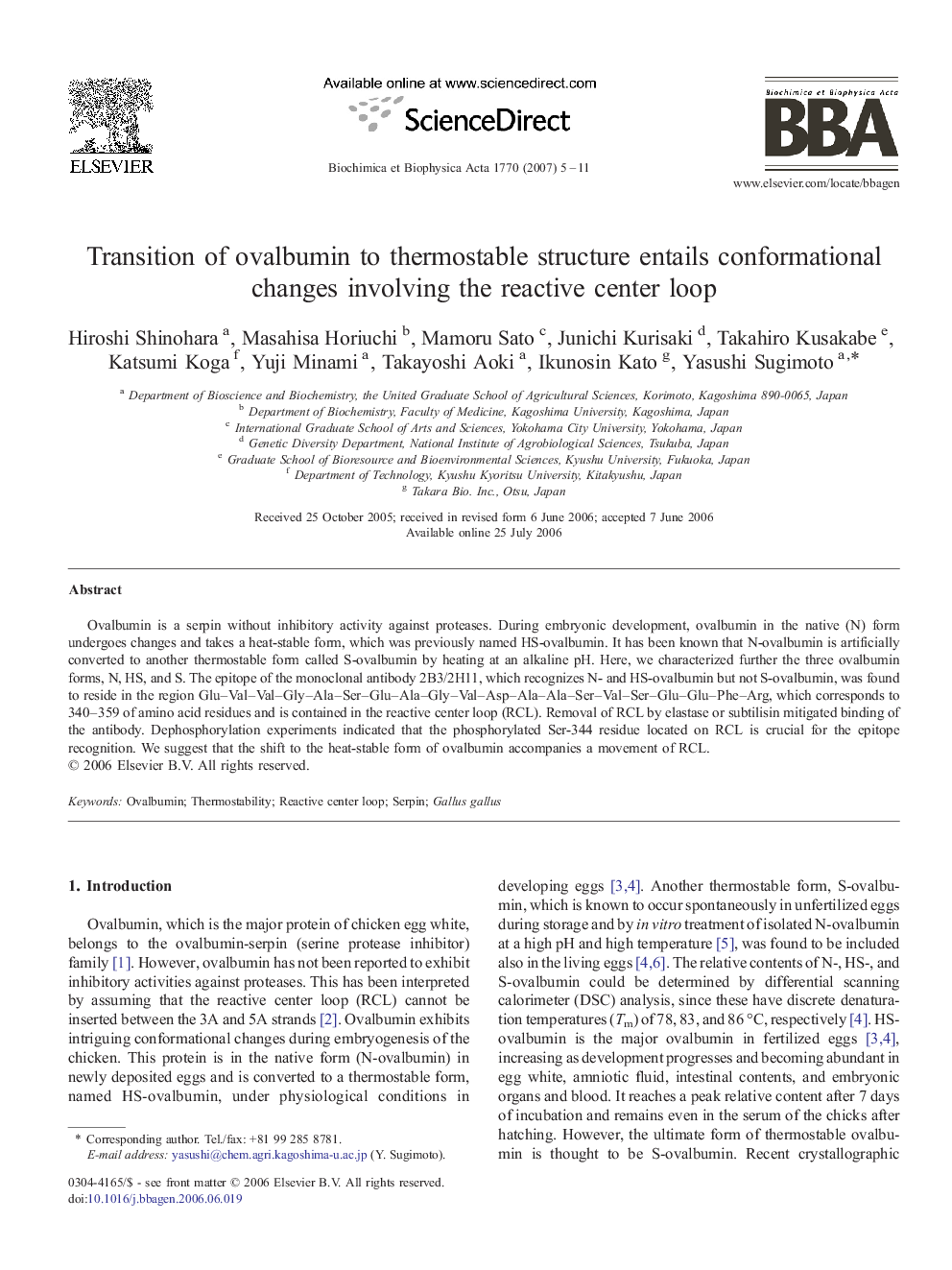| Article ID | Journal | Published Year | Pages | File Type |
|---|---|---|---|---|
| 1948558 | Biochimica et Biophysica Acta (BBA) - General Subjects | 2007 | 7 Pages |
Ovalbumin is a serpin without inhibitory activity against proteases. During embryonic development, ovalbumin in the native (N) form undergoes changes and takes a heat-stable form, which was previously named HS-ovalbumin. It has been known that N-ovalbumin is artificially converted to another thermostable form called S-ovalbumin by heating at an alkaline pH. Here, we characterized further the three ovalbumin forms, N, HS, and S. The epitope of the monoclonal antibody 2B3/2H11, which recognizes N- and HS-ovalbumin but not S-ovalbumin, was found to reside in the region Glu–Val–Val–Gly–Ala–Ser–Glu–Ala–Gly–Val–Asp–Ala–Ala–Ser–Val–Ser–Glu–Glu–Phe–Arg, which corresponds to 340–359 of amino acid residues and is contained in the reactive center loop (RCL). Removal of RCL by elastase or subtilisin mitigated binding of the antibody. Dephosphorylation experiments indicated that the phosphorylated Ser-344 residue located on RCL is crucial for the epitope recognition. We suggest that the shift to the heat-stable form of ovalbumin accompanies a movement of RCL.
